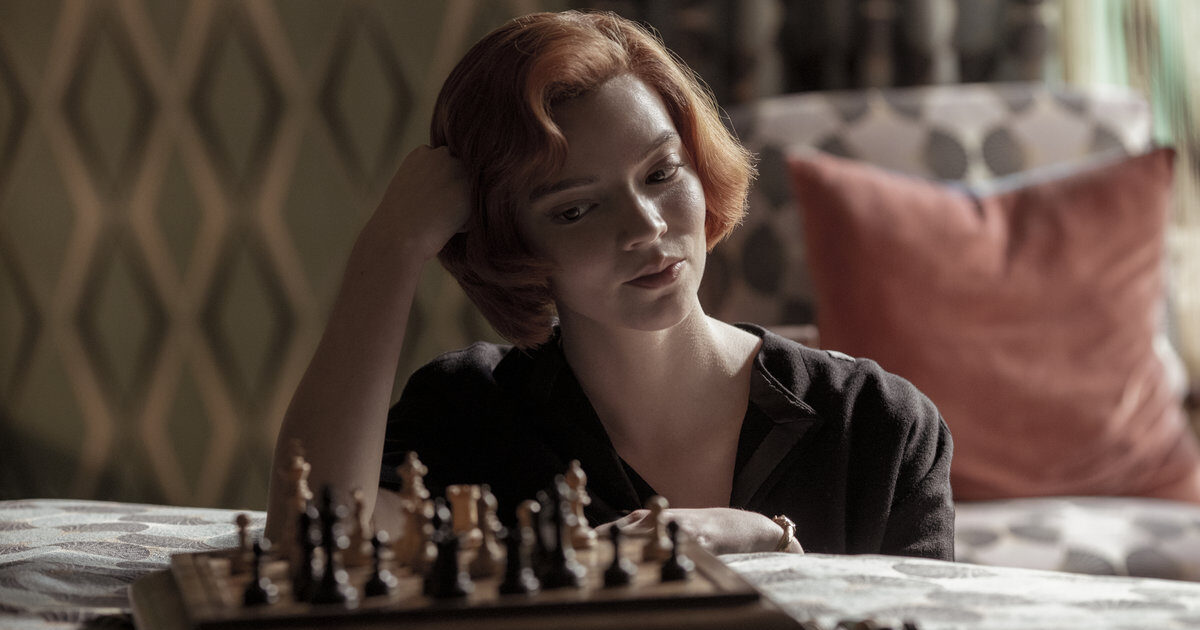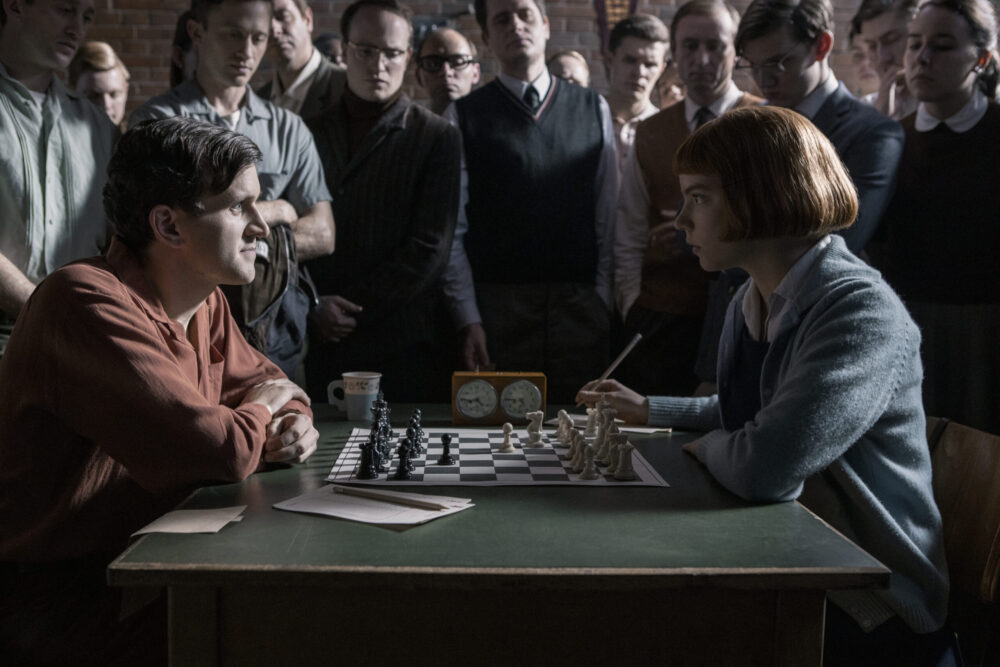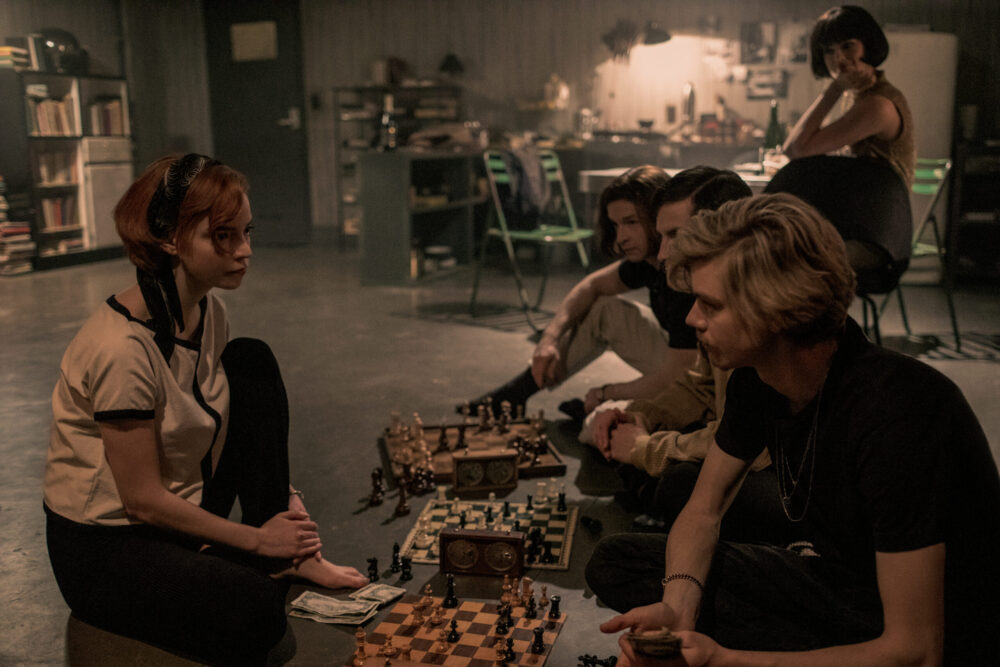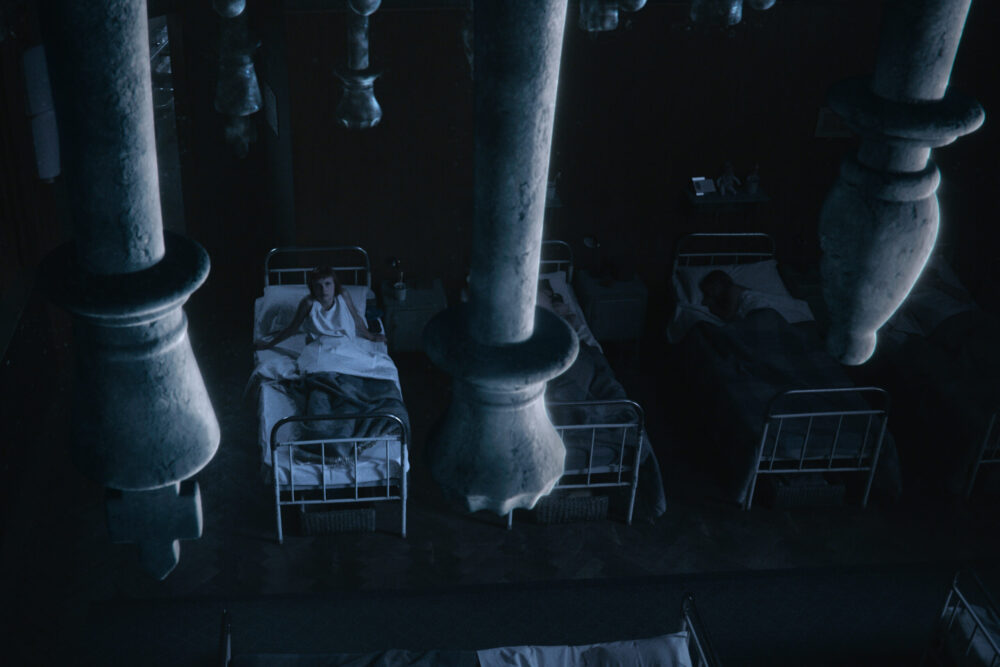
It’s easy to be cynical in the golden age of streaming. You watch a trailer for The Queen’s Gambit, and you see yet another love letter to the ‘60s (but here’s the kicker: it’s about chess!). Yet another elfin white woman with an intense stare, yet another slew of articles singing praises, and you just want to pass. You have seen so much posturing and fake feminist branding, so many Bechdel fails.
In this case, I’m glad I boarded the hype train.
The Queen’s Gambit is one of the best limited series I have seen. The story is moving, the characters are well-drawn, and the chess matches are endlessly creative. You know a show’s good if it can convince viewers, after just seven hours of television, that they now have a sophisticated understanding of competitive chess.
Most importantly, The Queen’s Gambit sidesteps stereotypes about women common to period pieces and media in general in the character of Beth Harmon, portrayed mesmerizingly by Anya Taylor-Joy.
Representation of women in media is better than it’s ever been, but problematic female archetypes still fill our screens. Archetypical characters (e.g. the hero, the martyr, etc.) aren’t inherently bad and can make stories easier to relate to. But if they’re overused or constantly associated with one gender, they slip into harmful stereotypes. While Beth, over the course of the series, evokes common female tropes, she evades cliché.
Warning: spoilers for The Queen’s Gambit ahead.
The TV and film industry love a female victim, especially if she’s a plot device for a man’s character development, or if she’s victimized in a brutal way. It sounds dramatic, but there’s literally a “Women in Refrigerators” trope detailing this phenomenon.
Beth’s tragic past as an orphan, her trauma and substance abuse issues, plus her hardships as a lone woman in the chess world could have transformed her story into one of downtrodden victimhood. Instead, she drives the plot of the series, and the men in her life mostly play passive supporting roles.

It would have been easy to revolve the series around Beth’s gender. She faces sexism and over-sexualization in many spheres of her life, but this experience serves more as a reflection of the time, rather than as the linchpin of her story. With so many scenes featuring older men talking down to a young, vulnerable Beth, I was, out of depressing habit, prepared for a darker story. But I breathed a sigh of relief when I realized sexual violence had no role in this story. Even better, despite The Queen’s Gambit setting Beth up as an “only one in the room” female character, she’s never tasked with the burden of making feminist history or battling patriarchy.
There’s an important nuance here. While Beth is a far cry from a token woman or a damsel in distress, she doesn’t fall into the trap of the “strong female character” either.
It sounds odd, but unfortunately, it’s possible, even commonplace, to crank the character development dials way too hard in the opposite direction. Instead of a heroic woman rebelling against traditional gender roles, we get an invulnerable, often physically powerful goddess that’s just “not like other girls.”
In context, Beth naturally evokes this archetype. She’s literally not like other girls because, as a chess prodigy, she’s not like most people. She challenges gender roles by playing competitive chess, an activity not associated with women at the time. But she never embodies the foundational issue with these characters: an implicit belief that stereotypically masculine traits are superior to feminine ones.

The Queen’s Gambit’s nuanced characterization prevents Beth from falling into commonly gendered tropes. She seeks connection and companionship from her peers, but she’s not criticized for being needy or obsessive. She’s also self-sufficient and comfortable with some degree of solitude, but not lauded for individualist or lone wolf tendencies.
There were moments early on where a lesser story would have Beth reject female relationships and femininity after she’s bullied at school or told chess isn’t for girls. Instead, she develops a characteristic love of fashion and a close bond with her adoptive mother (Marielle Heller). And while most of her relationships with her male peers turn sexual or romantic—a common hallmark of the “cool girl” variation of the strong female character—they don’t derail Beth’s personality. She’s still self-assured and ambitious, still prioritizes her own goals, and still struggles with trauma and addiction.

Even so, the show flirts with some stereotypes around Beth, and with its other characters. As destructive as Beth’s mid-season bender is, there was a level of glamor (and matching underwear) in her spiral that felt inauthentic. Moreover, she recovers startlingly quickly after some “tough love” from her childhood friend Jolene (Moses Ingram).
And, as much as The Queen’s Gambit tries to lampshade itself with a “not your guardian angel” speech, Jolene very much falls into the stereotype of the Magical Negro. I recommend this article by Maz Hedgehog for more detail about how the show fumbles its black and bisexual characters.
Despite these faults, The Queen’s Gambit is visually stunning and lushly scored, with an impressive character study at its core that evokes compelling archetypal characters while evading tropery. You get all the interesting emotional baggage of a tragic backstory, the empowerment of a lone female lead, but none of the pitfalls. Beth is not a strong female character, but a strongly written one, and a treat to watch.
I hate the hype train as much as anyone else, but The Queen’s Gambit is worth the ride.
The Queen’s Gambit is streaming exclusively on Netflix.
Quick Scan
The Queen’s Gambit is a rich and rewarding story to round off the year with. Well worth the hype.

